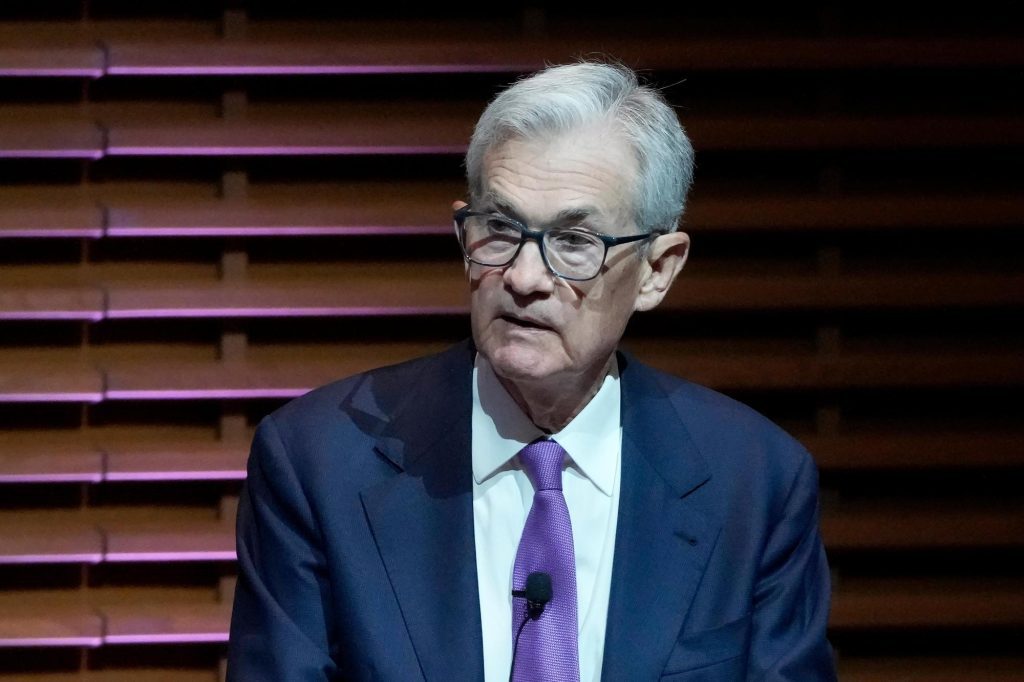By CHRISTOPHER RUGABER (AP Economics Writer)
In a speech at Stanford University on Wednesday, Powell mentioned that the Federal Reserve is likely to decrease its main interest rate later this year, despite recent reports showing that the U.S. economy is still strong and that U.S. inflation rose in January and February.
Powell stated, “The recent data do not … materially change the overall picture,” and continued to describe the situation as one of solid growth, a strong but rebalancing labor market, and inflation moving down toward 2% on a sometimes bumpy path.
He added that most Fed officials believe it is likely that they will start reducing their key rate “at some point this year.
During his speech, Powell also aimed to dismiss any idea that the Fed’s interest-rate decisions might be influenced by this year’s presidential election campaign. The Fed will meet during the peak of the campaign, in July and September, to decide whether to cut rates.
During the upcoming meetings in May and June, Fed officials will have a challenging decision to make. They must be cautious not to cut rates too early, as this could keep inflation high–or even cause it to pick up again. According to the central bank’s preferred measure, annual inflation increased to 2.5% in February, although this was significantly lower than its peak of 7.1%.
However, if Fed officials delay reducing rates for too long, the current high borrowing costs for mortgages, car loans, and business loans could significantly weaken the economy, potentially leading it into a recession.
Despite a notable decrease from its peak, inflation remains above the Fed’s 2% target. Furthermore, average prices are still well above their levels before the pandemic–a source of dissatisfaction for many Americans and potentially a threat to President Joe Biden’s re-election campaign.
The recent slight increase in inflation has led some economists to postpone their projections for when the Fed will begin reducing rates. The rate cuts would reverse the 11 increases carried out by the Fed starting in March 2022 to combat the worst inflation in four decades. Over time, a lower Fed rate would likely result in reduced borrowing rates for households and businesses.
Some economists now anticipate that the central bank’s initial rate cut may not occur until July or later. This expectation has led to speculation on Wall Street that the Fed could decide to postpone rate cuts until after the presidential election. The Fed’s November meeting is scheduled for Nov. 6-7, immediately after Election Day.
Former President Donald Trump has accused Powell of being “political” for considering rate cuts that Trump claims would benefit Biden and other Democrats. Powell was initially nominated to be Fed chair by Trump, who has stated that if he is elected president, he will replace Powell when the chair’s term ends in 2026.
In his speech on Wednesday, Powell highlighted that Congress intended for the Fed to be completely independent of politics, with officials serving long terms that do not coincide with elections.
Jerome Powell said that the independence of the Federal Reserve allows them to make monetary policy decisions without being influenced by short-term political factors.
In the past, presidents like Lyndon Johnson and Richard Nixon sometimes directly pressured Fed leaders to lower rates before elections in an attempt to boost the economy. However, recent presidents have refrained from publicly pressuring the Fed, except for Trump, who criticized Powell for increasing the Fed's benchmark rate in 2018 during his presidency.
Powell stated that the Fed has historically been willing to make or not make moves based on what it believes is best for the economy, without considering external factors, and it is important for people to be aware of this.
During their meeting two weeks ago, Fed officials projected that they might decrease their benchmark rate three times this year. However, nearly half of the 19 policymakers estimated only two or fewer rate cuts.
Robust economic growth could lessen the likelihood of a Fed rate reduction later this year for two reasons. Firstly, consistent hiring and strong consumer spending can prompt companies to increase prices, leading to higher inflation.
Another reason is that a strong economy reduces the necessity for the Fed to lower rates, which typically stimulates growth. Powell and other officials have emphasized that as long as the economy remains strong, they can take the time to evaluate the path of inflation and ensure that it returns to their 2% target.
A recent government report revealed that consumer spending sped up in February, and prices increased more quickly than is aligned with the Fed's inflation target for the second consecutive month.
Powell expressed that it is too early to determine if the recent readings on inflation indicate more than a temporary increase. He mentioned that, given the strong economy and progress on inflation so far, they have the time to base their decisions on policy on the incoming data.
Some other Fed officials reiterated their anticipation for three quarter-point rate cuts this year in their comments this week, while also highlighting that such reductions would depend on inflation decreasing from the January and February readings.
Loretta Mester, president of the Federal Reserve's Cleveland branch, stated to reporters on Tuesday that she believes three rate cuts are still reasonable, but it's a close decision.
However, Raphael Bostic, president of the Atlanta Fed, mentioned earlier on CNBC that he foresees only one interest rate reduction this year, likely in the last three months of the year.
Mester and Bostic are two of the 12 policymakers with voting rights on the central bank's interest rate decisions this year.









